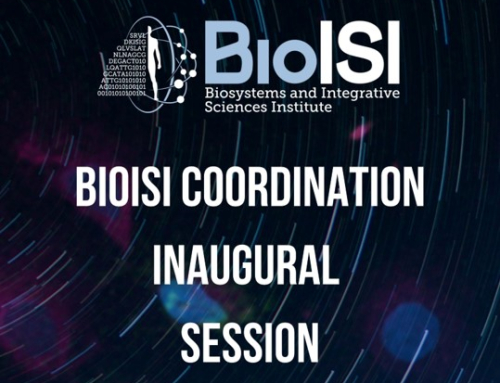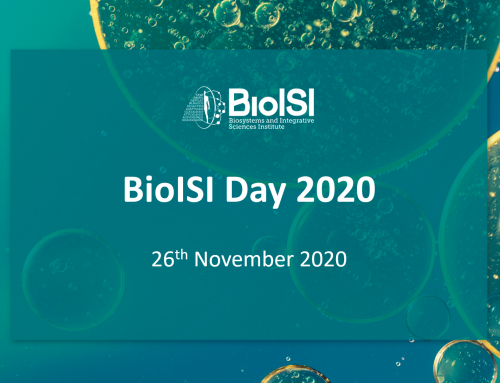FCiências.ID Amphitheatre – April 16, 17h

Tomás Silva
PhD Student – CBS
Computational study of pH-dependent membrane insertion of pHLIP peptides
The pH (low) insertion peptide (pHLIP) belongs to a family of transmembrane peptides, with the ability to insert in membrane cells dependent on how acidic is their vicinity, such as in tumoral cells, thus working as an efficient tumor-specific biomarker. However, wt-pHLIP pH -dependent membrane insertion has not been fully explored at the molecular level. Also, since the peptide accumulates in the kidneys in considerable amounts, due to their naturally acidic extracellular pH, it is urgent to improve peptide specificity by delimiting the pH range of insertion.
The constant-pH molecular dynamics (CpHMD) method proved to be capable in sampling protonation states of titrable residues of both wt-pHLIP and L16H variant, while also revealing important structural details about the peptide-membrane equilibria. Furthermore, our work produced remarkable results by predicting detailed and accurate pKa profiles of the residues. Moreover, the L16H variant was able to establish a pH range of insertion, despite being too large for in vivo studies and therapeutic purposes. For the future, we aim to improve sampling quality, using a pH replica exchange (pHRE) methodology, for better system description and pKa prediction. Additionally, we will design new pHLIP sequences mutated with cationic residues, as to narrow down the pH range of insertion and evaluate their validity for clinical applications.

Márcia Faria
BioSYS PhD Student – FunGP
Targeting RAC1-signaling to enhance iodide-related cancer therapy
The Sodium Iodide Symporter (NIS), responsible for active transport of iodide into thyroid cells, allows the use of radioactive iodine (RAI) as the systemic treatment of choice for thyroid cancer (TC) metastatic disease. Still, patients with advanced forms of TC sometimes lose the ability to respond to RAI therapy, which reduces their survival rates. NIS protein abundance and stabilization at the plasma membrane (PM) has been put forward as a major limiting factor for iodide uptake. Thus, in this study, we are currently investigating the impact of RAC1-signaling on NIS functional expression at the PM. We generated a TPC1 thyroid cancer cell line clone stably expressing a full-length NIS construct containing an extracellular triple HA tag. The PM levels of NIS upon interference with RAC1-signaling were assessed using surface protein biotinylation assays. Notably, treatment with the selective RAC1 inhibitor, EHT1864, induced a dramatic decrease (≈90%) on NIS overall and PM expression, while the overexpression of constitutively active RAC1 mutant produced the opposite result, increasing by over 2- fold NIS PM levels. To ascertain the potential impact of RAC1-signaling on the efficacy of iodide uptake, we used a non-radioactive iodide influx assay that showed a decreased iodide influx rate upon EHT1864 treatment. These results disclose an unequivocal association between RAC1-signaling and NIS posttranslational regulation.







